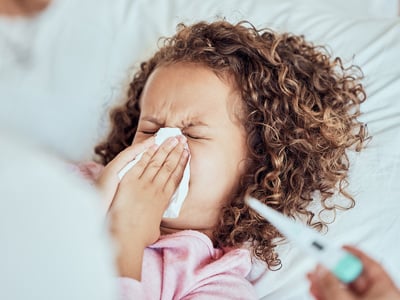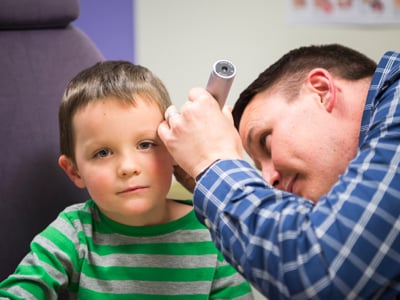- Doctors & Departments
-
Conditions & Advice
- Overview
- Conditions and Symptoms
- ¿Está enfermo su hijo?
- Parent Resources
- The Connection Journey
- Calma Un Bebé Que Llora
- Sports Articles
- Dosage Tables
- Baby Guide
-
Your Visit
- Overview
- Prepare for Your Visit
- Your Overnight Stay
- Send a Cheer Card
- Family and Patient Resources
- Patient Cost Estimate
- Insurance and Financial Resources
- Online Bill Pay
- Medical Records
- Política y procedimientos en el hospital
- Preguntamos Porque Nos Importa
-
Community
- Overview
- Addressing the Youth Mental Health Crisis
- Calendar of Events
- Child Health Advocacy
- Community Health
- Community Partners
- Corporate Relations
- Global Health
- Patient Advocacy
- Patient Stories
- Pediatric Affiliations
- Support Children’s Colorado
- Specialty Outreach Clinics
Your Support Matters
Upcoming Events
Mental Health Town Hall
martes, 23 de abril de 2024Join Children’s Hospital Colorado pediatric experts for a virtual...
-
Research & Innovation
- Overview
- Pediatric Clinical Trials
- Q: Pediatric Health Advances
- Discoveries and Milestones
- Training and Internships
- Academic Affiliation
- Investigator Resources
- Funding Opportunities
- Center For Innovation
- Support Our Research
- Research Areas

It starts with a Q:
For the latest cutting-edge research, innovative collaborations and remarkable discoveries in child health, read stories from across all our areas of study in Q: Advances and Answers in Pediatric Health.


When Do Kids Need Antibiotics?

Before scientists developed antibiotics in the early 1900s, illnesses caused by bacteria were a leading cause of death worldwide. Today, those discoveries help doctors treat a range of bacterial infections affecting kids, from pneumonia and tuberculosis to strep throat and urinary tract infections.
Despite these benefits, antibiotics aren’t always appropriate for every illness. If your child is sick and you’re wondering if they need antibiotics, it’s important to understand when these drugs work, when they won’t, and why they should be used with caution.
To help you feel more informed when meeting with your pediatrician about your child’s treatment, here’s a look at all the factors doctors consider before they prescribe an antibiotic.
When are pediatric antibiotics needed?
For many parents and caregivers, pediatric antibiotics are thought of as a first line of defense against any and all bugs affecting kids.
“People think that if they feel horrible, they should get an antibiotic,” says Sarah Parker, MD, pediatric infectious disease specialist and medical director of the Antimicrobial Stewardship Program at Children’s Hospital Colorado. “But they shouldn’t feel that the only way to be taken seriously by a provider is to get antibiotics.”
In fact, your doctor may not prescribe your child antibiotics because they don’t need them.
For example, if your child has a viral infection (such as the common cold), antibiotics won’t work. “A lot of people don’t understand that antibiotics don’t treat viruses,” Dr. Parker says.
That's because antibiotics only treat bacterial infections, says Children’s Hospital Colorado infectious diseases attending physician Michael Bozzella, DO.
“One of the most common misconceptions is that all things that cause fever in kids need to be treated by antibiotics, or that antibiotics fix everything,” Dr. Bozzella says. “Nine times out of 10 times in pediatrics, fevers are caused by a virus and antibiotics aren’t needed."
Taking antibiotics for an illness caused by a virus isn’t just ineffective; it can also lead to confusion later in life. For example, if a child develops a virus-related rash while taking an antibiotic, families may inaccurately associate the antibiotic with those skin changes.
"Younger kids with fevers can have what we call viral exanthems, or viral rashes,” Dr. Bozzella says. “If somebody gets labeled with a penicillin allergy because they got a viral rash when they had amoxicillin, that could lead to using second line agents, which may not be as effective in treating their infection or may have worse side effects.”
Therefore, even if you suspect your child needs antibiotics, it’s best to let a trusted pediatrician diagnose your child’s illness and decide whether pediatric antibiotics are necessary.
| Common illness | Is it bacteria or a virus? | Are antibiotics needed? |
| Abscess | Bacteria | Maybe |
| Bronchiolitis | Virus | No |
| Cellulitis | Bacteria | Yes |
| Chest cold (bronchitis) | Virus | No |
| Common cold (runny nose, cough) | Virus | No |
| COVID-19 | Virus | No |
| Ear infection | Could be either | Maybe |
| Mycoplasma infections | Bacteria | Maybe |
| Pneumonia | Could be either | Maybe |
| RSV | Virus | No |
| Sore throat not due to strep | Virus | No |
| Strep throat | Bacteria | Yes |
| Stomach bug | Virus | No |
| Traveler’s diarrhea | Bacteria | Maybe |
| Urinary tract infection | Bacteria | Yes |
How long are antibiotics necessary?
Some illnesses of the ear, nose and throat, such as strep throat, are caused by bacterial infections and may require antibiotics. Bacterial skin infections, such as cellulitis, may also require antibiotics. In some instances, pediatricians can keep an eye on the infection and determine if the antibiotics are working — and if they can be stopped early.
“For many common infections, new data is showing us that people only need five days or so of antibiotics. But there are times you may need a few extra days," Dr. Bozzella says. “In some situations, if your child’s symptoms are gone, their pain is gone and they’ve only done four or five days, we may recommend stopping the antibiotic before they’ve finished the originally prescribed course."
In the past, care providers believed it was best for patients to complete their course of antibiotics, even if they began to feel better. However, researchers are now looking to find the shortest effective duration of antibiotic therapy, as this can help reduce adverse reactions.
If symptoms go away before your child’s course of antibiotics has been completed, you can always ask your doctor for advice on stopping early. Otherwise, if your child is taking antibiotics, it’s important to continue with the prescribed dose unless your pediatrician advises otherwise.
Adverse effects of antibiotics for kids
Approaching antibiotics with caution can help you find an effective treatment for your child, while reducing short-term side effects, such as upset stomach, diarrhea and other forms of GI distress.
Recent research shows that overexposure to antibiotics early in life can disrupt the gut microbiome (the good bacteria living inside us), and lead to adverse effects in the long term.
“The more often a child takes antibiotics, the more selective pressure is placed on their systems for resistant pathogens,” Dr. Bozzella says. “Those more resistant bugs could lead to serious and potentially difficult to treat illness down the line.”
Children are more susceptible to microbiome disruption when they take antibiotics in the first five years of life, which can decrease temporary or long-term immune function. In more serious cases, researchers have found a connection between an altered microbiome and an increase in childhood asthma.
An imbalance in the microbiome has also been linked to more serious illnesses, such as obesity and Type 1 diabetes.
Fortunately, if your child does struggle with diarrhea or other tummy troubles when on antibiotics, there is data to suggest that probiotics and probiotic-containing foods can minimize gastrointestinal upset. That’s because probiotics can help rebalance some of the healthy bacteria that antibiotics disrupt.
"If kids enjoy yogurt or other fermented foods, I encourage families to include them in their diet while on antibiotics and after,” Dr. Bozzella says. “If families want to try over-the-counter agents, I don't discourage them.”
The problem with overprescribing antibiotics
The most far-reaching consequence of overusing antibiotics is that the bad bacteria can become antibiotic resistant, meaning it becomes immune to the antibiotic trying to kill it. Some bacteria divide or replicate every 20 minutes, and every division is a chance to acquire changes in their DNA that allow them to withstand the antibiotic. These evolved microbes can then be passed through human contact, increasing the number of antibiotic-resistant bacteria throughout society and the environment.
"Every time a person gets a course of antibiotics, the bugs that live in their body learn and adapt to that pressure,” Dr. Bozzella explains.
In other words, antibiotics present a challenge that gives bacteria a chance to strengthen themselves, and those that do become stronger and can become resistant to future antibiotics.
Illness-causing bacteria that are resistant to many antibiotics are sometimes referred to as superbugs. Superbugs aren’t common in pediatrics, especially in states like Colorado (they thrive in warm, wet environments). However, being aware of them can help parents understand why doctors are cautious about prescribing certain antibiotics.
For example, azithromycin is a common antibiotic used in pediatrics that can be overprescribed.
“Azithromycin is an antibiotic that we're seeing a lot of resistance to, especially with some of those common bacteria, like streptococcus pneumoniae, which is one of the most common causes of bacterial pneumonia and ear infections," Dr. Bozzella says.
Some strains of streptococcus pneumoniae have even become resistant to penicillin.
Bozzella explains that there are some illnesses where azithromycin is effective — mycoplasma infections, some mycobacterial infections and traveler’s diarrhea, to name a few. But for other illnesses, azithromycin isn’t the best choice, and it’s worth it to speak up.
“If a child is being prescribed azithromycin for something like an ear infection, sinus infection or pneumonia, I would encourage parents to ask why,” Dr. Bozzella says. “Sometimes there is a good reason, but often there are better options for those infection types.”
Another superbug is methicillin-resistant staphylococcus aureus (MRSA). These strains of staphylococcus aureus can cause a staph infection that doesn’t respond to antibiotics normally used to treat them.
Other resistant bacteria that can affect children are called extended spectrum beta-lactamase producers (ESBLs), which can cause urinary tract infections.
“The term ESBL refers to a mechanism of resistance, or a tool that these bacteria have developed, to basically chew up the antibiotics before they can affect the bacteria,” Dr. Bozzella says.
EBSLs and other resistant bacteria are most likely to appear in kids who are in and out of the hospital frequently, or those who have frequent medical procedures, so kids who are generally healthy aren’t as likely to experience such illnesses.
Using pediatric antibiotics
Providers are always considering the potential of resistance when deciding whether to prescribe antibiotics.
“The more antibiotics that we put out there, the more that these bacteria learn and develop these resistance patterns,” Dr. Bozzella explains.
Resistant bacteria can evolve so quickly that it’s difficult to create new antibiotics fast enough to treat the infections.
On the other hand, using antibiotics sparingly has been proven to reduce rates of resistance. Research has shown that the longer a person waits between antibiotic courses, the less likely they are to experience an antibiotic-resistant infection.
That’s why sometimes, having a mild viral illness for a few days is far better than experiencing the adverse long-term effects of antibiotics. Time, rest and other home remedies may be the best approach, and while waiting it out won’t immediately relieve your child’s discomfort, having patience now will pay off in the long run.
“I know it's always tough to see your kids suffer or be in pain, but our immune systems are fantastic,” Dr. Parker says. “They're defending us every single day, and sometimes we’ve just got to give it that day or two for them to kick in and take care of the infection.”
Ultimately, parents and caregivers can use this information to guide important conversations with their child’s provider. Being informed not only helps parents feel more confident when asking questions or discussing concerns regarding their child’s treatment, but it can also make for a faster — and less stressful — path to healing.



 720-777-0123
720-777-0123






